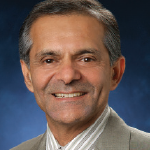As 2017 unfolds—a year when MACRA begins, lawmakers take steps to dismantle the health reform efforts of the past eight years, and political uncertainty is the rule—it is imperative that the ACR leverage its advocacy agenda by maintaining its seat at the American Medical Association’s (AMA’s) House of Delegates (HOD), says Gary Bryant, MD, FACP and chair of the ACR’s delegation to the HOD.
AMA: The Largest Voice
“The AMA is the largest physician organization and convener of all physician voices. It leverages the voices of the rheumatology community, on behalf of the specialty and our patients,” says Dr. Bryant. “We wouldn’t be able to do that ourselves given our size. It gives us a seat at the table for making policy.”
The HOD is the policy-making arm of the AMA, driven not by politics and ideology, but by the policy priorities represented by its members. The HOD comprises representatives of all 50 states, several U.S. territories and more than 170 specialty societies. The ACR has two delegates to the AMA, including Dr. Bryant.
A Megaphone for the ACR
As the country’s largest and most visible physician society, the AMA provides the ACR, a relatively small subspecialty, a megaphone to amplify our voice at federal and state levels. The HOD meets twice a year, and each year, the ACR’s delegates bring at least one or two resolutions to the table. Resolutions have the potential to become official policy of the AMA or directives that determine where the AMA focuses its efforts.
In recent years, the ACR has, through the AMA HOD (and in concert with RheumPAC and the ACR’s Government Affairs Committee), helped achieve several high-priority goals, such as:
- Exempting small rheumatology practices from some parts of MACRA;
- Protecting individualized compounding in physicians’ offices from the FDA’s definition of a compounding facility; and
- Blocking the Medicare Part B Demonstration Project.
Not Your Grandfather’s AMA
In order to keep our seat at the HOD table and participate in other vital activities of the AMA—including the Relative Update Committee (RUC) and the CPT Advisory Committee—at least 1,000 ACR members must also be members of the AMA.
This year, the AMA will conduct its five-year review of the ACR’s membership. Thus, ACR members should renew their membership in or join the AMA, Dr. Bryant says. He recognizes ACR members may have mixed feelings about the AMA or have had negative experiences with the organization in the past; however, “this is not your grandfather’s AMA,” he says. “In my 15 years [as part of the ACR AMA delegation], I have seen a significant evolution of those elected to AMA offices and who is sitting on the dais at the AMA HOD meetings.”


